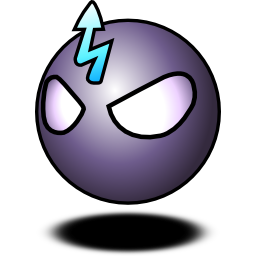I’ve decided to share some code today, just because I’m such a nice guy. Those of you who enjoy the more perverse ways to apply C++ tricks will enjoy this. Those who prefer simpler, more primitive approaches (that’s not a bad thing) may not appreciate this creation as much. What I’ve got here is a utility class that makes it fairly straightforward to serialize C++ objects to and from JSON using the generally decent JsonCpp library. Hierarchies are properly saved and loaded with no real effort. It works well for us, and probably has plenty of limitations too. Maybe some of you out there will find it useful. It seems to be difficult to find decent serialization code that isn’t also somehow awful to use.
More …
11 Sep 2012
•
Photography
I chose not to go to SIGGRAPH 2012, and I’m starting to wish I had. Via Julien Guertault, I found the course on Cinematic Color.
More …
16 Jul 2012
•
Photography
 I’ve mentioned in the past that as an extension of my game development work, I began to explore photography. I’m a big fan of the Micro Four Thirds mirrorless cameras, and I recently purchased the newest iteration in the line: the Olympus OM-D E-M5. I thought I’d go ahead and do a review, since a number of people have asked me about the camera. To make a long story short, Olympus has finally gotten serious and this camera is a force to be reckoned with. Much more importantly, the E-M5 is a lot of fun to shoot with. I enjoy photography much more with it than anything I’ve ever used, and for an enthusiast that’s crucial.
I’ve mentioned in the past that as an extension of my game development work, I began to explore photography. I’m a big fan of the Micro Four Thirds mirrorless cameras, and I recently purchased the newest iteration in the line: the Olympus OM-D E-M5. I thought I’d go ahead and do a review, since a number of people have asked me about the camera. To make a long story short, Olympus has finally gotten serious and this camera is a force to be reckoned with. Much more importantly, the E-M5 is a lot of fun to shoot with. I enjoy photography much more with it than anything I’ve ever used, and for an enthusiast that’s crucial.
More …
04 Jun 2012
•
Graphics
•
Photography
What do you know about how computers read, store, process, and display colors? If your answer is R, G, and B color channels in the range of [0, 255], go hang your head in shame – and no credit for alpha/transparency channels. If you said spanning [0, 1], that’s very slightly better. More points if you mentioned HSV, YUV, YcbCr, etc. Less points if you didn’t mention sRGB. Extra credit if you thought about gamma curves or color temperatures, and a highly approving nod if the word “gamut” crossed your mind. Yes, today we’re going to be talking about color spaces, gamuts, color management, bit depth, and all the fun stuff that defines digital color. I’ve been doing a lot of photography work recently, and it’s brought a number of things to the forefront which I did not previously understand and of which I haven’t seen concise, centralized discussion. Most of this applies equally well to digital image capture (cameras, scanners), digital image rendering (offline or real time), and digital image reproduction (monitors, printers). Understand in advance that I’m trying to distill a book’s worth of theory into a blog post. This will be fast, loose, and cursory at best, but hopefully it’s enough of a glimpse to be enlightening. I’m multi-targeting this post for software engineers (game developers mainly), artists and photographers. We’ll see how that goes.
More …
I wanted a new coat of paint around here. We’re going to try this one on for size. It may or may not stick, we’ll see. I’m going to try and revive blogging here, as there are a number of things I’ve been meaning to write for many months. Many of those things are about photography, some of them are about games, and not a lot are about SlimDX or SlimTune.
More …
 Promit's Ventspace
Promit's Ventspace
